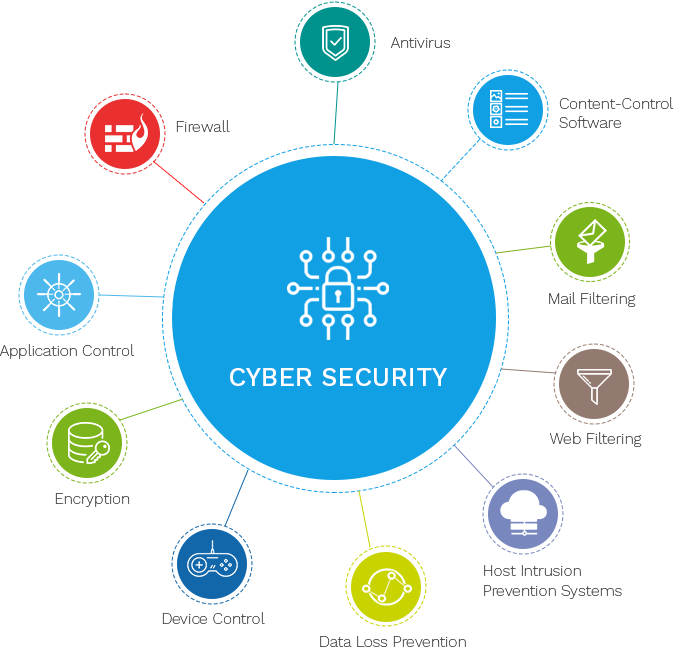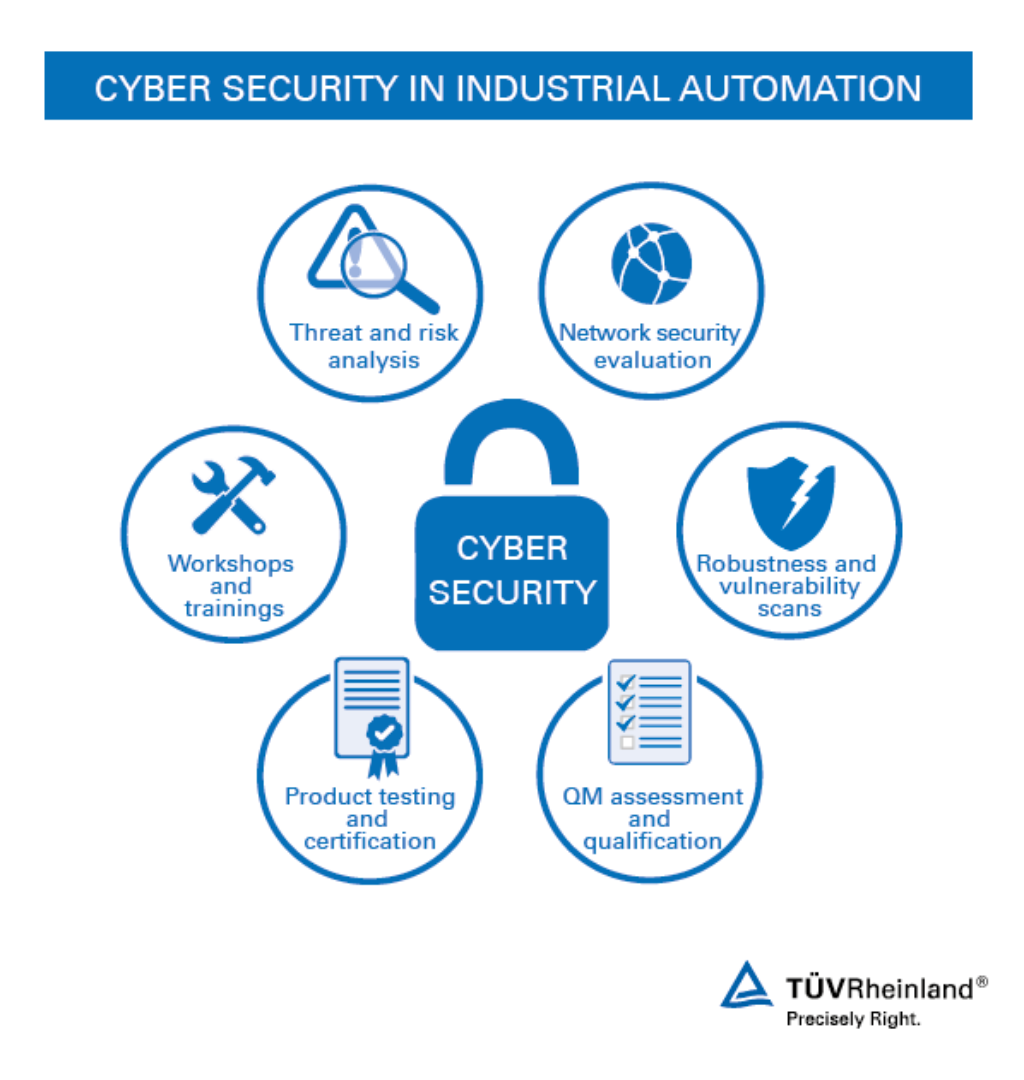Checking Out Just How Cyber Protection Functions to Safeguard Your Online Presence
In today's digital landscape, safeguarding one's on-line visibility has actually come to be significantly crucial, with cyber risks evolving at a worrying speed. Cyber safety and security utilizes a diverse technique, integrating sophisticated modern technologies like firewalls, encryption, and multi-factor verification to safeguard delicate info. Nonetheless, the intricacy of these systems questions regarding their efficiency and implementation. Exactly how do these innovations interact to develop a smooth guard against cyber threats? And what duty does behavior analytics play in this elaborate web of security steps? These are necessary queries that merit more exploration in our pursuit for electronic safety.
Recognizing Cyber Threats
In the electronic landscape, cyber dangers stand for an awesome obstacle, needing a nuanced understanding of their nature and possible influence. These hazards incorporate a large range of harmful tasks orchestrated by people, teams, and even nation-states, targeting sensitive information, interrupting procedures, or creating reputational damages. Comprehending cyber dangers begins with determining the various types they take, consisting of malware, phishing, ransomware, and distributed denial-of-service (DDoS) attacks.
Malware, or destructive software, consists of infections, worms, and trojans that penetrate systems to steal data or trigger injury. Ransomware secures targets' information, demanding a ransom money for its launch, posturing substantial functional and monetary dangers.
Recognizing the motivations behind these risks is necessary. Cybercriminals commonly look for financial gain, while hacktivists may seek ideological objectives. State-sponsored assailants might target critical framework for reconnaissance or destabilization functions. By comprehensively comprehending the varied nature of cyber dangers, organizations can much better expect prospective vulnerabilities and purposefully designate resources to bolster their defenses versus these ever-evolving dangers.
Key Cyber Protection Technologies
As companies make every effort to secure their digital possessions, key cybersecurity modern technologies play a vital role in strengthening defenses against cyber risks. These innovations incorporate a broad range of devices and approaches designed to shield data honesty, confidentiality, and schedule. In today's digital landscape, intrusion discovery systems (IDS) and breach prevention systems (IPS) are essential. IDS display network traffic for questionable tasks, while IPS proactively block prospective hazards, guaranteeing real-time defense.
Moreover, antivirus and anti-malware services stay essential in determining and minimizing harmful software program. They use heuristic and signature-based strategies to detect known and unknown threats. Endpoint discovery and feedback (EDR) systems better boost security by providing comprehensive visibility right into endpoint tasks, allowing quick event reaction.
Identity and access monitoring (IAM) innovations make certain that just licensed users gain accessibility to critical sources, consequently minimizing the danger of unauthorized information accessibility. Multifactor authentication (MFA) adds an added layer of safety, requiring users to give several verification factors.
In addition, safety information and occasion management (SIEM) systems aggregate and examine safety and security information, offering understandings right into potential susceptabilities and assisting in aggressive hazard administration. These technologies jointly develop a durable structure, encouraging companies to preserve a resistant cybersecurity pose.
Role of Firewalls and Security
By controlling outbound and incoming network web traffic, they protect against unauthorized access to systems and data. Firewall softwares make use of predefined protection rules to block or permit data packets, efficiently protecting delicate info from cyber dangers.
File encryption, on the other hand, changes legible data into an inscribed layout that can just be deciphered with a specific cryptographic secret. File encryption is important for protecting delicate information such as economic information, individual identification details, and exclusive company information.
With each other, firewalls and security offer a comprehensive defense reaction. While firewalls take care of access and guard networks from unauthorized access, file encryption safeguards data stability and confidentiality. Their incorporated application is necessary in mitigating risks and ensuring the safety of digital possessions in an increasingly interconnected globe.

Significance of Multi-Factor Authentication
While firewall softwares and click to read more encryption develop the backbone of cybersecurity, enhancing defenses even more requires the execution of multi-factor verification (MFA) MFA includes an added layer of safety by needing individuals to verify their identity via two or even more different factors prior to accessing to sensitive information or systems. These aspects commonly consist of something the individual knows (a password), something the customer has (a protection token or smart device), and something the individual is (biometric verification such as a fingerprint or facial recognition)
The importance of MFA in safeguarding on-line existence is critical in today's electronic landscape. With cyber risks becoming significantly advanced, relying only on standard password-based authentication leaves systems at risk to breaches. MFA substantially decreases the threat of unapproved access by making it greatly much more tough for cybercriminals to jeopardize an account. Even if a password is stolen, the added verification actions act as a powerful obstacle.

Behavioral Analytics in Cyber Safety And Security
Behavioral analytics represents a crucial advancement in cybersecurity, providing an innovative technique to danger discovery and avoidance. By analyzing patterns in individual habits, this approach recognizes anomalies that may show prospective cyber dangers.
This modern technology is specifically effective in discovering insider dangers and zero-day assaults, which are usually missed by conventional safety and security systems. Insider risks, where individuals within an organization misuse access benefits, can be specifically destructive and hard to detect. Best Cyber Security Services check my source in Dubai. Behavior analytics gives a layer of analysis that can catch subtle deviations in behavior, such as unusual access patterns or information transfers, before they intensify into considerable safety occurrences
In addition, the vibrant nature of behavioral analytics allows it to adjust to developing risks, offering continuous defense as cyberattack methods alter. As organizations increasingly rely upon electronic facilities, integrating behavioral analytics right into cybersecurity methods guarantees a resilient defense, preserving and protecting delicate data count on digital interactions.
Verdict
Finally, the complex strategy of cyber safety, encompassing modern technologies such as firewall softwares, encryption, multi-factor verification, and behavioral analytics, plays a critical function in safeguarding online existence. By filtering web traffic, securing he said data transmission, calling for several confirmation methods, and checking user task for anomalies, these innovations jointly deal with the intricacies of modern cyber risks. This split protection not only safeguards individual and financial details but likewise makes certain continuous defense in an ever-evolving digital landscape.
.jpg?width=1920&height=1080&name=Four%20Kinds%20of%20Cybersecurity%20Companies%20(1).jpg)
As organizations strive to guard their electronic possessions, essential cybersecurity modern technologies play a critical function in fortifying defenses versus cyber dangers. Firewall softwares utilize predefined security rules to block or allow information packets, effectively securing sensitive details from cyber threats.This modern technology is particularly efficient in finding insider hazards and zero-day assaults, which are often missed out on by conventional protection systems. By filtering system traffic, protecting information transmission, needing numerous verification approaches, and keeping an eye on user task for abnormalities, these modern technologies collectively deal with the intricacies of modern cyber dangers.